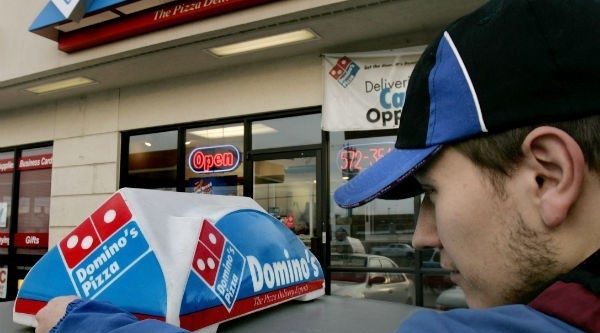

Australia’s largest pizza chain is planning to launch 200 new stores in the next 12 months off the back of a 51% jump in sales.
Domino’s raked in $64 million in profit after tax during the 2015 financial year, with same-store sales lifting by 11.3%.
Group chief executive Don Meij attributed the stellar results to continued growth in digital sales as well as the popularity of the Pizza Mogul app, which allows customers to build their own pizza from scratch.
While Domino’s balance sheet does not outline exactly how much the company invested in technology, the business poured $38.5 million into its stores and “digital assets” last financial year.
The fast food giant also rolled out its GPS driver-tracking technology throughout Australia in July, which was the subject of copycat claims by a small business in Sydney.
Domino’s says its quicker ordering system, new mobile-responsive website and touch ID for iPhone and iPad apps have increased the frequency of sales in Australia by 26%.
The business has also been quick to embrace wearable technology, having launched pizza-ordering apps for Android and iOS smartwatches.
Looking ahead, Domino’s says it wants to rollout a 15-20 minute delivery guarantee in order to snap up more customers eager to get a quick fix.
Dr Jana Matthews, director of the Centre for Business Growth at the University of South Australia, told SmartCompany all businesses – big and small – should be following in Domino’s footsteps and thinking about how they can invest in technology in order to kick-start growth.
“There’s no question that using technology more effectively in your business drives growth,” Matthews says.
“The question is when you invest, and the trade-off between actually hiring people to do the work and actually having technology.
“In other words, instead of having a call centre you have an app… you end up shortening the cycle between the customer and them receiving the product. Another use of technology would be telling the delivery cars the most efficient path between the last customer and the next customer.”
Matthews says the powerful thing about technology is it can trim business costs but at the same time create a better customer experience.
“There are many things technology can do that people can’t do, like finding the most efficient path through traffic,” she says.
“From the beginning you have to be thinking about how you can use technology to do the tasks that, in the olden days, I might have done myself as the owner of the company. But if I don’t do those tasks I might be freed up to do more important things.
“There’s a trade-off, of course, but if you are the person that sends out all the bills or processes all the orders coming in, you will be the bottleneck to growth.”
Matthews says small business owners should be thinking about how they can leverage apps or mobile-optimised websites.
“Technology is in all parts of our lives, including our company’s lives,” she says.
“It doesn’t have to be the most expensive technology – sometimes it can be cheaper than what you think.”
Mark McDonald, the co-founder of Appster, told SmartCompany consumers now expect faster ordering and progress updates with most online purchases.
“If software isn’t a core part of your business model, you’ll be disrupted by a leaner, meaner version of your business model,” McDonald says.
“Companies shouldn’t overlook that.”
But McDonald says technology is not necessarily a silver bullet.
“To become a technology-first company you need more than financial investment,” he says.
“It’s critical to focus on having the right people, strategy and execution as well.”


COMMENTS
SmartCompany is committed to hosting lively discussions. Help us keep the conversation useful, interesting and welcoming. We aim to publish comments quickly in the interest of promoting robust conversation, but we’re a small team and we deploy filters to protect against legal risk. Occasionally your comment may be held up while it is being reviewed, but we’re working as fast as we can to keep the conversation rolling.
The SmartCompany comment section is members-only content. Please subscribe to leave a comment.
The SmartCompany comment section is members-only content. Please login to leave a comment.